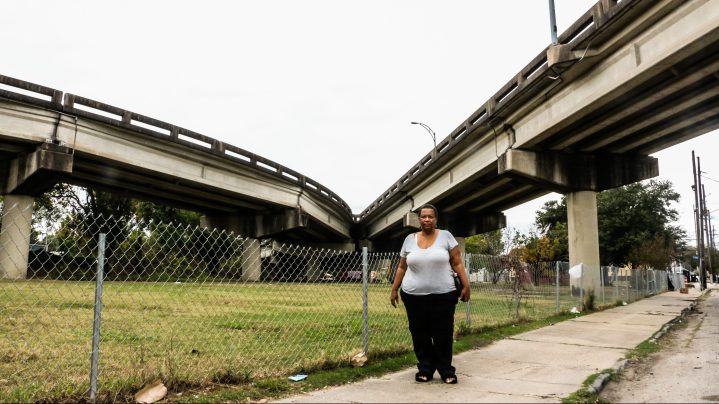
A divide over how to heal a community divided by a highway
A divide over how to heal a community divided by a highway

Throughout the middle of the last century, highways destroyed and devastated many Black neighborhoods. Now, the Joe Biden administration wants to address that legacy with the Reconnecting Communities program. It funds projects to stitch together neighborhoods cut apart by highways or other transportation infrastructure in generations past. The program announced its first awards last month.
But one community in New Orleans is still trying to find the best way to heal the harm a highway has caused.
New Orleans’ Tremé neighborhood is one of the oldest Black communities in the country. For a long time, Claiborne Avenue was its Wall Street. It was lined with local businesses, and a stand of live oak trees ran down its center.

But then in the 1960s, the bulldozers came in. Now a crumbling expressway — a segment of Interstate 10 — towers over Claiborne.
Amy Stelly’s family bought their home back when there was no highway. She still lives there and can hear the roar of the interstate from her front porch.
“It was a great, vibrant, middle-class neighborhood,” she said. “The highway changed that.”
So, Stelly’s nonprofit, the Claiborne Avenue Alliance Design Studio, submitted an application to the Reconnecting Communities program. It asked for money for a study to reimagine Claiborne — without the highway. Stelly said removing it is the only way to address the suffering it has caused.
“We’re still stuck with the noise, and we’re still stuck with the dirt and we’re still gonna be stuck with the crime and all of the things that we’ve been stuck with since its inception,” she said.
But Stelly’s group didn’t end up getting the money. Instead, in late February, the U.S. Department of Transportation awarded $500,000 to a state plan to keep and upgrade the highway.
The award is a fraction of the funding the state asked for and a mere sliver of the $95 million project’s estimated total — which was to include maintenance work on the highway and the installation of a public market and performance spaces underneath it. The state is also considering whether to remove some of the on- and off-ramps that slice through the Tremé.
The Louisiana Department of Transportation and Development didn’t respond to a request for comment after the federal government made its decision about the smaller grant. Officials from the city of New Orleans who worked closely with the state on the application said they’re planning to engage the community on next steps, but offered few details.


The U.S. Department of Transportation declined to comment on specific applications, but a spokesperson said interest in Reconnecting Communities far outpaced the funding available.
The highway has a supporter in Shawn Wilson, who until recently headed Louisiana’s transportation department. Much of New Orleans’ economy relies on it, he said.
“The reality is that the port is dependent upon this. The health care system is dependent upon this,” said Wilson, who announced in early March that he’s running for governor. “The name of the program is Reconnecting Communities. It’s not necessarily removing infrastructure from communities.”
But Amy Stelly said the state’s plan to improve lighting and repair the road wouldn’t remedy the economic and health problems caused by the interstate itself. “You can’t talk about equity and leave that thing up,” she said.
As the local government figures out its next steps, what the community wants most is to have an impact on the discussion — something it didn’t have when the highway was built.
There’s a lot happening in the world. Through it all, Marketplace is here for you.
You rely on Marketplace to break down the world’s events and tell you how it affects you in a fact-based, approachable way. We rely on your financial support to keep making that possible.
Your donation today powers the independent journalism that you rely on. For just $5/month, you can help sustain Marketplace so we can keep reporting on the things that matter to you.

















